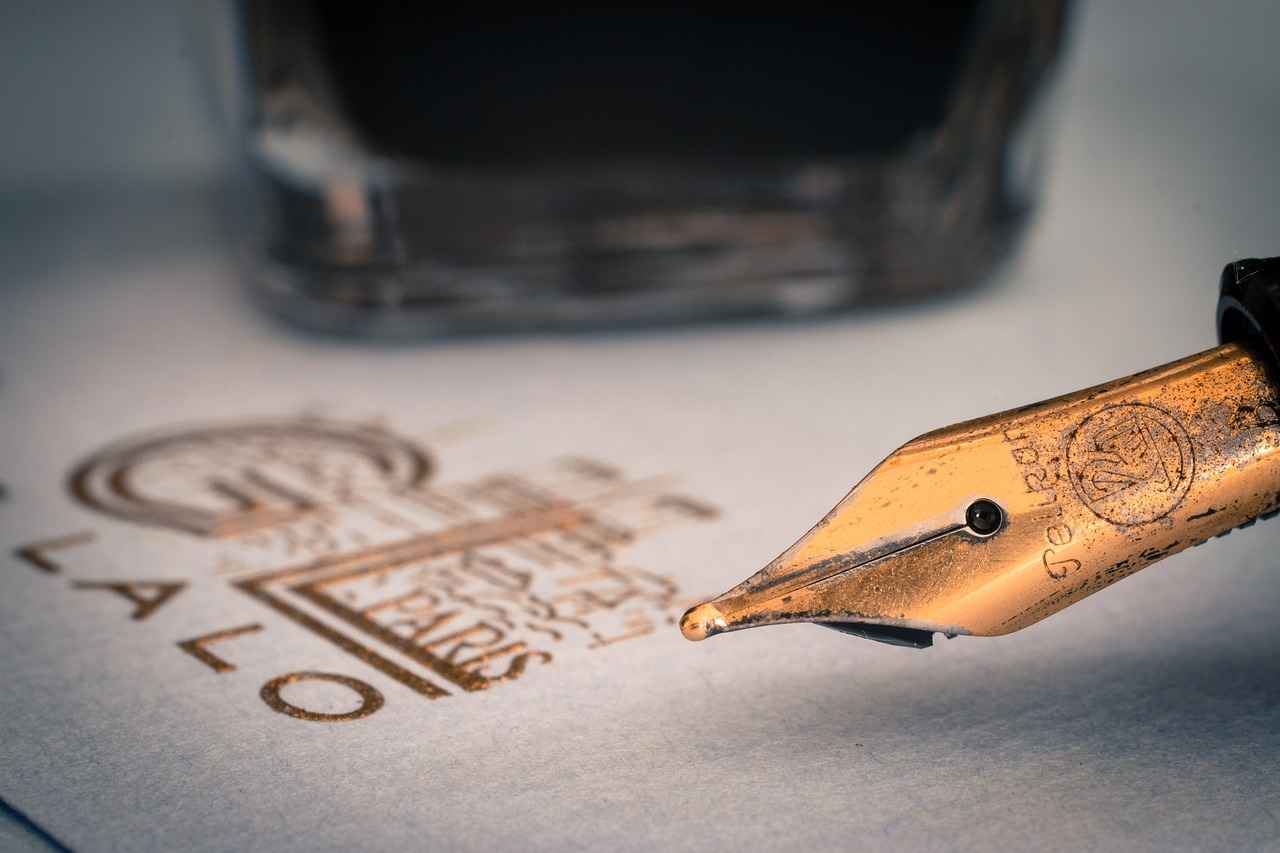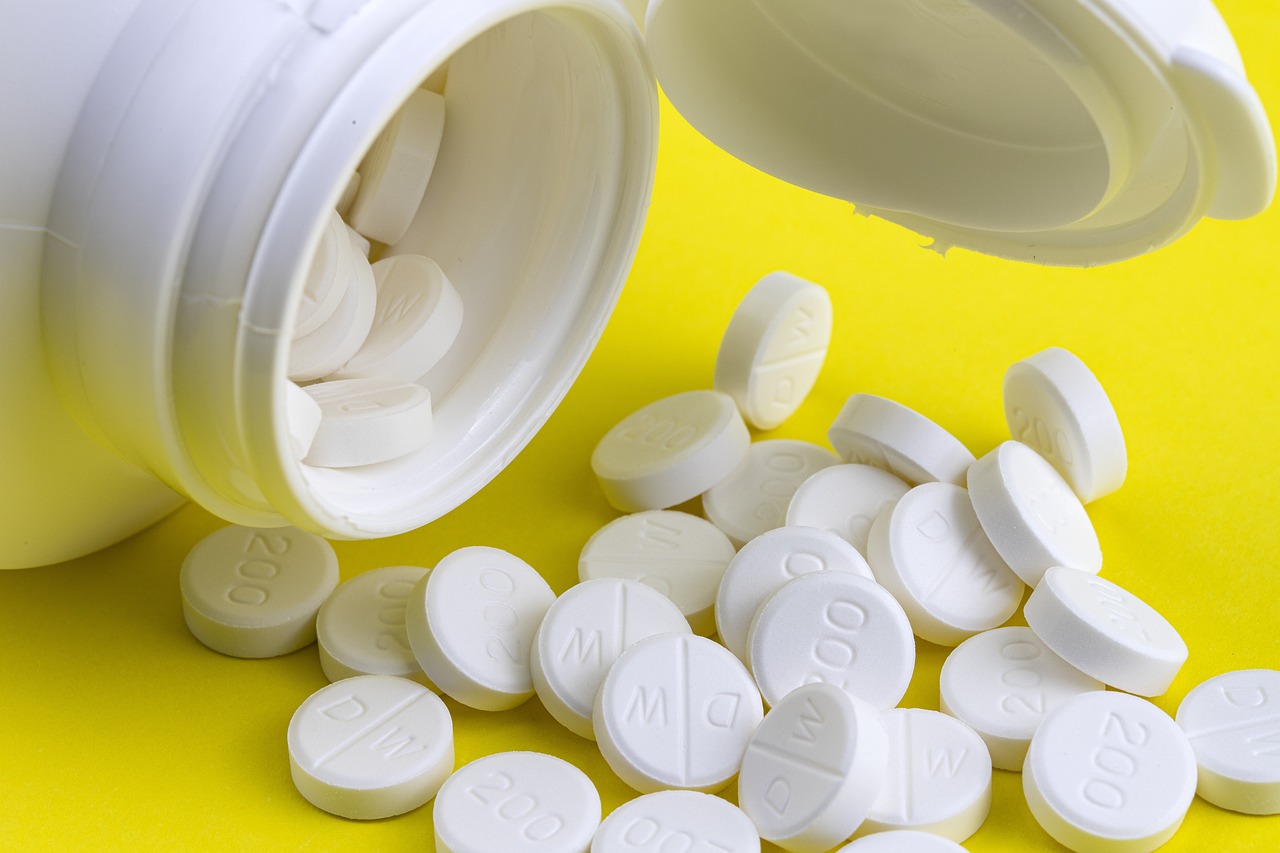This article delves into the timeline for dermal fillers to settle, providing important insights on the healing process, factors that influence results, and tips for achieving optimal outcomes after treatment.
Dermal fillers are injectable substances that help restore volume and smooth out wrinkles, giving the skin a more youthful appearance. These fillers are composed of various materials, including hyaluronic acid and collagen, each serving a unique purpose in enhancing facial aesthetics. Understanding their composition is crucial for anyone considering treatment.
The settling time for dermal fillers can vary significantly. Generally, while initial swelling tends to subside within a few days, the complete settling process may take up to two weeks. During this time, the filler integrates into the skin, providing a natural look.
Several key factors can affect how quickly fillers settle:
- Type of Filler: Different fillers have varying settling times. For instance, hyaluronic acid fillers may settle faster compared to collagen-based options.
- Injection Technique: The skill of the injector plays a crucial role. A well-trained professional can ensure that fillers are placed correctly, promoting quicker healing.
- Individual Healing Response: Each person’s body responds differently to injections. Factors like age, skin type, and overall health can influence the healing process.
Proper aftercare is essential for optimal results. Here are some tips:
- Avoid strenuous exercise for at least 24 hours post-treatment.
- Keep the treated area clean and avoid touching it unnecessarily.
- Stay hydrated to help your skin heal.
- Follow any specific instructions provided by your healthcare provider.
While some initial results are visible immediately after the procedure, the final appearance of fillers typically becomes apparent after about two weeks. This period allows for any swelling or bruising to resolve, revealing the true effects of the treatment.
To ensure optimal settling of fillers, avoid the following:
- Excessive sun exposure, which can irritate the skin.
- Alcohol consumption, as it may increase swelling.
- Facial massages or aggressive skin treatments for a few weeks.
Once your fillers have settled, maintaining results involves a combination of proper skincare, healthy lifestyle choices, and possibly scheduling follow-up treatments. Regular moisturizing and sun protection can prolong the effects of the treatment.
Like any cosmetic procedure, dermal fillers come with potential risks and side effects. Common side effects include:
- Swelling: This is typically mild and subsides within a few days.
- Bruising: Some bruising may occur at the injection site.
- Redness: Temporary redness can also appear post-treatment.
In rare cases, complications may arise that require medical attention. Look out for signs such as severe swelling, persistent pain, or any unusual changes in the treated area. Prompt attention can ensure safe and effective resolution of any issues.

What Are Dermal Fillers?
Dermal fillers have become increasingly popular in the world of cosmetic enhancements, offering a non-surgical solution to restore youthful volume and minimize the appearance of wrinkles. These injectable substances are designed to improve facial contours and enhance features, making them a favored choice among those seeking aesthetic improvements.
Understanding what dermal fillers are and their composition is essential for anyone considering treatment. Typically, these fillers are made from substances that mimic the body’s natural components, such as hyaluronic acid, collagen, and calcium hydroxylapatite. Each ingredient serves a specific purpose, contributing to the overall effectiveness of the treatment.
- Hyaluronic Acid Fillers: These are among the most popular types of fillers. They provide immediate results by attracting moisture to the skin, resulting in a plump and hydrated appearance.
- Calcium Hydroxylapatite Fillers: Often used for deeper lines and wrinkles, these fillers stimulate collagen production, providing longer-lasting results.
- Poly-L-lactic Acid Fillers: These stimulate the body’s own collagen production over time, making them ideal for gradual results.
- Fat Grafting: This involves transferring fat from one part of the body to another, providing a natural way to restore volume.
Many individuals opt for dermal fillers due to their ability to offer immediate results with minimal downtime. This non-invasive treatment allows patients to enhance their features without the need for surgery. Moreover, the effects can last from several months to over a year, depending on the type of filler used and individual factors.
Before undergoing treatment, it is crucial to consult with a qualified provider. Discuss your medical history, any allergies, and your aesthetic goals to ensure the best possible outcome. Additionally, understanding the potential risks and side effects associated with dermal fillers is vital.
The procedure typically involves a quick consultation followed by the injection of the filler into targeted areas. A skilled injector can create a customized treatment plan that addresses specific concerns while maintaining a natural look. The use of topical anesthetics can help minimize discomfort during the procedure.
While some results can be seen immediately after the injection, it is essential to allow time for the filler to settle. Initial swelling may occur, which typically subsides within a few days. Full results are generally visible after about two weeks, once any bruising and swelling have resolved.
As with any cosmetic procedure, there are potential risks and side effects associated with dermal fillers. Common side effects include swelling, bruising, and redness at the injection site. Although rare, more serious complications can occur, such as allergic reactions or vascular occlusion.
Post-treatment care is crucial for optimal results. Patients are advised to avoid strenuous exercise, excessive sun exposure, and certain skincare products for a few days following the procedure. Following the injector’s aftercare instructions can greatly enhance the healing process and ensure the fillers settle as intended.
In summary, dermal fillers offer a versatile and effective solution for those looking to enhance their appearance. Understanding their composition, benefits, and potential risks is essential for making an informed decision. With the right approach and care, patients can enjoy the rejuvenating effects of dermal fillers for months to come.

How Long Does It Take for Fillers to Settle?
Understanding the timeline for dermal fillers is essential for anyone considering this popular cosmetic treatment. Many patients wonder, While the initial results may be visible right after the procedure, the complete settling process can take longer than expected. In this article, we will explore the various factors that influence settling time and provide tips for achieving optimal results.
The settling time for dermal fillers can vary significantly based on several factors. Typically, patients experience some initial swelling that subsides within a few days. However, the complete settling of fillers may take up to two weeks. During this period, the fillers integrate with the surrounding tissue, providing a natural appearance.
Several key factors can affect how quickly fillers settle:
- Type of Filler: Different fillers have distinct properties and settling times. For instance, hyaluronic acid fillers may settle faster than collagen-based products.
- Injection Technique: The skill and technique of the injector can significantly influence the settling process. A skilled injector can ensure even distribution and minimize complications.
- Individual Healing Responses: Each person’s body responds differently to treatments. Factors such as age, skin type, and overall health can impact healing and settling times.
Proper aftercare is essential to ensure that fillers settle as intended. Here are some tips:
- Avoid strenuous exercise: For at least 24 hours post-treatment, refrain from activities that could increase blood flow to the face.
- Stay hydrated: Drinking plenty of water can help maintain skin elasticity and promote healing.
- Follow your injector’s advice: Adhering to post-treatment guidelines provided by your injector will help you achieve the best results.
While some immediate results are visible after treatment, the final appearance of fillers typically becomes apparent after about two weeks. This time frame allows for any swelling or bruising to resolve, revealing the true effect of the fillers.
To ensure optimal settling of fillers, avoid the following:
- Alcohol: Refraining from alcohol can help reduce swelling and bruising.
- Heat exposure: Avoid saunas, steam rooms, or excessive sun exposure for at least a week.
- Facial massages: Avoid touching or massaging the treated area for a few days to prevent displacement of the filler.
Once your fillers have settled, maintaining results is essential. This involves:
- Regular skincare: Use moisturizers and sun protection to keep your skin healthy.
- Lifestyle choices: A balanced diet and avoiding smoking can prolong the effects of fillers.
- Follow-up treatments: Consider scheduling touch-ups as recommended by your injector to maintain volume.
Like any cosmetic procedure, dermal fillers come with potential risks and side effects. Common side effects include:
- Swelling and bruising: These are normal and typically resolve within a few days.
- Redness: Mild redness at the injection site is common and usually subsides quickly.
If you experience severe pain, prolonged swelling, or any unusual symptoms, it’s essential to seek medical attention promptly.
What Factors Influence Settling Time?
Understanding how long dermal fillers take to settle is crucial for anyone considering this popular cosmetic treatment. While the initial results may appear almost immediately, the final look can take up to two weeks to manifest fully. This timeline can be influenced by several factors, each playing a unique role in the settling process.
Several factors can affect how quickly fillers settle, including the type of filler used, injection technique, and individual healing responses. Let’s explore each of these factors in detail:
- Type of Filler: Different fillers have varying compositions, which can impact their settling time. For instance, hyaluronic acid fillers tend to integrate smoothly into the skin, often settling faster than collagen-based fillers. Understanding the specific characteristics of the filler can help manage expectations regarding the settling process.
- Injection Technique: The skill and technique of the injector are critical in determining how well the filler settles. A qualified practitioner will use techniques that minimize trauma to the tissue, which can reduce swelling and promote quicker healing. Techniques such as micro-cannula injections may also help in achieving better results with less downtime.
- Individual Healing Responses: Each person’s body reacts differently to fillers based on factors like age, skin type, and overall health. For example, younger individuals may experience quicker healing times due to better circulation and skin elasticity, while older individuals may take longer for fillers to settle due to slower metabolic rates.
While some factors influencing settling time are beyond your control, there are steps you can take to enhance your results:
1. Follow post-treatment care instructions provided by your injector.2. Avoid strenuous exercise for at least 24 hours after treatment.3. Stay hydrated to support your skin's healing process.4. Refrain from alcohol and blood-thinning medications for a few days post-treatment.
By adhering to these guidelines, you can help ensure that your fillers settle as intended and achieve the best possible outcomes.
As mentioned earlier, while some immediate results are visible after treatment, the final appearance typically becomes apparent after about two weeks. During this time, the initial swelling and bruising will subside, allowing the filler to settle into its final position.
Like any cosmetic procedure, dermal fillers come with potential risks and side effects. Common side effects include swelling, bruising, and redness at the injection site. Being informed about these can help you manage these effects effectively.
In some cases, complications may arise that require medical attention. Understanding the signs of complications can help ensure prompt and appropriate care, allowing you to enjoy the benefits of your treatment without unnecessary worry.
Type of Filler
When considering dermal fillers, it’s essential to understand that the you choose can significantly impact the results and settling time. Different fillers, such as hyaluronic acid and collagen-based products, each have unique characteristics that influence how they behave under the skin.
- Hyaluronic Acid Fillers: These are some of the most popular fillers on the market. Hyaluronic acid is a naturally occurring substance in the body that helps retain moisture. Fillers like Juvederm and Restylane are known for their smooth consistency and ability to produce immediate results. However, they may take about one to two weeks to fully settle.
- Collagen-based Fillers: These fillers are derived from animal sources or synthesized to mimic natural collagen. While they can provide excellent volume, they often require a longer settling time, sometimes extending up to three weeks.
- Calcium Hydroxylapatite Fillers: Found in products like Radiesse, these fillers stimulate collagen production and offer a firmer texture. They typically settle in about two weeks.
- Poly-L-lactic Acid Fillers: Known for their gradual volumizing effect, these fillers, such as Sculptra, may take a few months to show full results as they work by stimulating collagen over time.
The composition of the filler plays a crucial role in how quickly it integrates into the skin. For instance, hyaluronic acid fillers are gel-like and tend to mold well to the facial structure, leading to a more natural appearance shortly after injection. In contrast, fillers that stimulate collagen production may require a longer period to achieve optimal results.
Understanding the settling times of different fillers can help manage expectations. Many patients anticipate immediate results, but the reality is that the final appearance may take several days or even weeks to manifest fully. For example, although hyaluronic acid fillers may show initial volume, they can still shift slightly as they settle into the skin.
In addition to the type of filler, several other factors can influence how quickly fillers settle:
- Injection Technique: A skilled injector can ensure that the filler is placed correctly, which can minimize swelling and promote faster settling.
- Individual Healing Responses: Each person’s body reacts differently to fillers, influenced by factors like skin type, age, and overall health.
- Aftercare: Following post-treatment care instructions can significantly affect the healing process and settling time.
To achieve the best results, consider the following tips:
- Follow Aftercare Instructions: Adhere to the guidelines provided by your injector to promote healing.
- Avoid Certain Activities: After treatment, it’s advisable to refrain from strenuous exercise and excessive sun exposure, which can exacerbate swelling.
- Stay Hydrated: Drinking plenty of water can help maintain skin elasticity and support the filler.
By understanding the different types of fillers and their settling times, you can make informed decisions about your treatment and set realistic expectations for your results.
Injection Technique
When it comes to dermal fillers, the is a crucial factor that can greatly influence the overall outcome of the treatment. The way fillers are injected can determine not only the aesthetic results but also the healing process and potential complications. A skilled injector understands the nuances of facial anatomy and the specific properties of various fillers, allowing them to achieve optimal results.
One of the primary reasons why the injection technique is so vital is that it directly impacts how the filler settles within the skin. A proficient injector employs techniques that promote even distribution of the filler, which can help in minimizing lumps or irregularities. This is particularly important because uneven settling can lead to a less desirable appearance, prompting the need for corrective treatments.
Additionally, a skilled injector can effectively manage the depth at which the filler is placed. Different areas of the face may require varying depths to achieve a natural look. For instance, fillers used in the lips might be injected at a different depth than those used in the cheeks. This precision is essential for achieving a balanced and youthful appearance.
Moreover, the injector’s technique can influence swelling and bruising post-treatment. An experienced professional knows how to minimize trauma to the surrounding tissues, which can lead to a quicker recovery time. This is beneficial for patients who wish to return to their daily activities as soon as possible.
Another aspect to consider is the type of filler being used. Different fillers have varying consistencies and properties, and a skilled injector will adjust their technique accordingly. For example, thicker fillers may require a different approach compared to more fluid options. Understanding the characteristics of each filler allows the injector to tailor their technique for the best possible outcome.
Furthermore, patient-specific factors such as skin type, age, and overall health can influence the effectiveness of the injection technique. A knowledgeable injector will take these factors into account, customizing their approach to meet the unique needs of each individual. This personalized attention can lead to enhanced satisfaction and better long-term results.
In summary, the skill and technique of the injector are paramount in determining the success of dermal filler treatments. From ensuring even distribution to minimizing complications, a proficient injector can significantly enhance the results and overall experience for the patient. Therefore, when considering dermal fillers, it is essential to choose a qualified and experienced professional who can deliver the best possible results.
Ultimately, investing in a skilled injector is investing in your appearance and well-being. The right technique can make all the difference in achieving a natural, youthful look that enhances your features while maintaining your unique identity.
How to Care for Your Skin Post-Treatment?
After receiving dermal fillers, proper aftercare is crucial for achieving the best possible results. Following specific guidelines can enhance healing and ensure that fillers settle as intended. This section will provide you with essential tips on how to care for your skin post-treatment.
Aftercare plays a significant role in the healing process. It helps to minimize swelling, bruising, and discomfort, while also ensuring that the fillers integrate smoothly into your skin. By adhering to recommended aftercare practices, you can achieve a more natural and aesthetically pleasing outcome.
- Avoid Touching Your Face: For at least 24 hours post-treatment, refrain from touching, massaging, or applying pressure to the treated areas. This helps prevent displacement of the filler.
- Cold Compress: Applying a cold compress can reduce swelling and alleviate discomfort. Ensure the compress is clean and not applied directly to the skin to avoid frostbite.
- Stay Upright: Keeping your head elevated for the first few hours can help minimize swelling and promote better circulation.
Proper hydration is vital for skin health. Drink plenty of water to help your skin recover and maintain its elasticity. Additionally, consider using a gentle, hydrating moisturizer to keep your skin supple.
- Intense Exercise: Avoid strenuous workouts for the first 24 to 48 hours. Increased blood flow can exacerbate swelling and bruising.
- Heat Exposure: Stay away from saunas, hot tubs, and direct sunlight for at least a week, as heat can increase swelling.
- Avoid Alcohol and Blood Thinners: Refrain from consuming alcohol and using blood-thinning medications for a few days post-treatment to reduce the risk of bruising.
Once your fillers have settled, maintaining your results is essential. Incorporate a good skincare routine that includes sun protection, as UV exposure can degrade fillers over time. Using products rich in antioxidants can also help keep your skin looking vibrant.
Schedule follow-up appointments with your injector to monitor the results. They can provide additional tips and assess whether any touch-ups are necessary. Regular check-ins can help you maintain your desired appearance and address any concerns promptly.
If you experience severe pain, persistent swelling, or any unusual symptoms, it’s essential to contact your healthcare provider immediately. Early intervention can prevent complications and ensure a smooth recovery.
By following these aftercare tips, you can enhance your healing process and ensure that your dermal fillers settle beautifully. Remember, optimal results stem from both the procedure and the care you provide afterward.

When Will I See the Final Results?
When considering dermal fillers, one of the most common questions that arise is “When will I see the final results?” Understanding the timeline for fillers to settle can significantly enhance your experience and expectations regarding the treatment.
Immediately after the injection, many patients notice a visible improvement in the treated areas. This can include enhanced volume and a reduction in the appearance of wrinkles. However, it is crucial to remember that these results are often accompanied by some swelling and bruising, which can temporarily obscure the final outcome.
Typically, swelling and bruising from filler injections can last anywhere from a few days to a week. During this time, the initial results may not reflect the final appearance of the fillers. It is essential to keep in mind that while some immediate results are visible, the true effects of the fillers will become apparent after about two weeks. This period allows for the swelling to subside and for the filler to integrate with your skin.
- Type of Filler: Different fillers have varying compositions, and this can influence how quickly they settle. For instance, hyaluronic acid fillers may settle faster than collagen-based options.
- Injection Technique: The skill of the injector plays a significant role in the settling process. A skilled practitioner will ensure that the filler is placed correctly, minimizing complications and promoting faster healing.
- Individual Healing Response: Each person’s body reacts differently to treatments. Factors such as age, skin type, and overall health can affect how quickly fillers settle in.
To ensure that your fillers settle optimally, following proper aftercare is essential. Here are some tips to consider:
- Avoid strenuous exercise for 24-48 hours post-treatment.- Refrain from massaging or manipulating the treated areas.- Stay hydrated and maintain a healthy diet to support skin healing.
While it can be tempting to judge the results too early, it is important to exercise patience. The fillers need time to integrate fully with your skin. After the two-week mark, most patients can appreciate the final results, which typically include a more youthful appearance and smoother skin texture.
If you have concerns about the settling process or the results you are seeing, do not hesitate to reach out to your injector. They can provide personalized insights based on your treatment and help manage your expectations.
In conclusion, understanding the timeline for dermal fillers to settle can alleviate concerns and enhance your overall experience. Remember, while some immediate results are visible, the final appearance typically becomes clear after about two weeks, following the resolution of swelling and bruising.
What Should You Avoid After Getting Fillers?
After receiving dermal fillers, it is essential to follow certain guidelines to ensure the best possible results. Understanding what to avoid can significantly impact the settling process and overall satisfaction with the treatment. Here are key activities and products to steer clear of:
- Avoid Strenuous Exercise: Engaging in intense workouts can increase blood flow and may lead to additional swelling. It is advisable to refrain from heavy exercise for at least 24 to 48 hours post-treatment.
- Skip Alcohol Consumption: Alcohol can exacerbate swelling and bruising. To promote optimal settling of fillers, it is best to avoid alcohol for at least 24 hours after the procedure.
- Do Not Apply Makeup Immediately: It is recommended to wait at least 24 hours before applying makeup to the treated areas. This precaution helps minimize the risk of infection and allows the skin to breathe.
- Steer Clear of Heat: Activities that expose your skin to heat, such as saunas, hot baths, or sunbathing, should be avoided for at least a week. Heat can increase swelling and impede the settling of fillers.
- Limit Facial Massages: Avoid any facial massages or treatments that involve manipulation of the treated areas for at least two weeks. This helps prevent displacement of the filler and ensures it stays in the intended location.
- Do Not Use Blood Thinners: If possible, avoid medications and supplements that can thin the blood, such as aspirin and certain herbal supplements, for a few days before and after the treatment to reduce the risk of bruising.
These precautions are crucial for ensuring that the fillers settle correctly and achieve the desired effect. Being mindful of these recommendations can help prevent complications and enhance the longevity of your results.
In addition to avoiding the above activities, it is also important to follow any specific aftercare instructions provided by your injector. Each individual’s response to fillers can vary, and personalized care can lead to better outcomes.
Finally, if you experience any unusual symptoms such as excessive swelling, persistent pain, or signs of infection, it is important to contact your healthcare provider immediately. Being proactive about your post-treatment care will help ensure that your fillers settle beautifully and safely.
How to Maintain Your Results?
Maintaining the results of your dermal fillers is crucial for prolonging their effects and ensuring you look your best. After the initial healing period, which typically lasts a couple of weeks, there are several strategies you can implement to keep your skin looking youthful and vibrant.
Establishing a consistent and effective skincare routine is essential for maintaining the results of your fillers. Focus on products that promote hydration and elasticity. Here are some key elements to include:
- Moisturizers: Use a high-quality moisturizer that contains hyaluronic acid to help retain moisture in the skin.
- Sunscreen: Protect your skin from UV damage by applying broad-spectrum sunscreen daily, as sun exposure can accelerate aging.
- Antioxidants: Incorporate serums with antioxidants like Vitamin C to combat free radicals and promote a healthy glow.
Your daily habits significantly influence the longevity of your fillers. Consider adopting the following lifestyle choices:
- Hydration: Drink plenty of water to keep your skin hydrated from the inside out.
- Healthy Diet: Consume a balanced diet rich in vitamins, minerals, and healthy fats to support skin health.
- Avoid Smoking: Smoking can lead to premature aging and diminish the effects of fillers.
To maintain optimal results, consider scheduling regular follow-up treatments. Depending on the type of filler used, you may need touch-ups every six months to a year. Consult with your practitioner to determine the best schedule for your needs.
Be attentive to your skin and any changes that may occur over time. If you notice any irregularities or if the fillers appear to be wearing off more quickly than expected, consult your healthcare provider. They can assess your situation and recommend appropriate actions.
To ensure that your fillers settle properly and last longer, there are certain activities and products you should avoid:
- Intense Exercise: Avoid strenuous workouts for at least 24 hours post-treatment to minimize swelling.
- Hot Environments: Steer clear of saunas, hot tubs, and sunbathing immediately after your procedure.
- Avoid Alcohol: Refrain from consuming alcohol for a few days post-treatment to reduce the risk of bruising.
By following these guidelines and maintaining a proactive approach to your skincare and lifestyle, you can effectively prolong the results of your dermal fillers. Remember, your skin is a reflection of your overall health, so investing in it will yield beautiful, lasting results.

Are There Any Risks or Side Effects?
When considering dermal fillers, it’s essential to understand that, like any cosmetic procedure, there are potential risks and side effects involved. Being well-informed about these can empower you to make a safer decision regarding your treatment.
Dermal fillers are generally considered safe when administered by a qualified professional. However, side effects can occur, ranging from mild to severe. Some of the most common risks include:
- Swelling: Temporary swelling is a common reaction after the injection, usually resolving within a few days.
- Bruising: Some patients may experience bruising at the injection site, which can take time to heal.
- Redness: Mild redness may occur, typically subsiding quickly.
- Allergic Reactions: Though rare, some individuals may have an allergic reaction to the filler material.
- Infection: As with any injection, there is a slight risk of infection.
While most side effects are mild and temporary, serious complications can arise. These include:
- Vascular Occlusion: This occurs when the filler enters a blood vessel, potentially leading to tissue death.
- Granulomas: These are small lumps that can form under the skin as a reaction to the filler.
- Blindness: Rarely, if the filler is injected into a blood vessel that supplies the eye, it can cause vision loss.
It is crucial to monitor your symptoms after receiving fillers. If you experience any of the following, seek medical attention immediately:
- Severe pain or discomfort at the injection site
- Significant swelling or bruising that worsens over time
- Vision changes or loss
- Signs of infection, such as fever or pus
To reduce the likelihood of complications, consider the following tips:
- Choose a Qualified Injector: Ensure that your procedure is performed by a licensed and experienced professional.
- Follow Pre- and Post-Care Instructions: Adhering to the guidelines provided by your injector can help minimize risks.
- Be Honest About Your Medical History: Inform your injector of any allergies or medical conditions that may affect the procedure.
Understanding the potential risks and side effects of dermal fillers allows you to make an informed decision. While most side effects are mild and temporary, being aware of serious complications is essential. Always consult with a qualified professional to ensure your safety and satisfaction with the results.
Common Side Effects
When considering dermal fillers, it’s essential to be aware of the potential side effects that may occur post-treatment. Among the most common side effects are swelling, bruising, and redness. Understanding these effects can significantly enhance your experience and help you manage expectations effectively.
Swelling is a natural response of the body to any injection. It occurs as the body sends blood and fluids to the treated area to initiate the healing process. Typically, swelling peaks within the first 24 to 48 hours after the procedure and may gradually subside over the next few days. However, factors such as the type of filler used and the injection technique can influence the degree and duration of swelling.
Bruising occurs when small blood vessels, or capillaries, are damaged during the injection process. This can lead to discoloration in the skin, often appearing as purple or blue marks. While bruising can be concerning, it is typically temporary and resolves within a week or two. To minimize bruising, it’s advisable to avoid blood-thinning medications and alcohol for at least 24 hours before the treatment.
Redness at the injection site is another common side effect. This reaction is usually mild and should fade within a few hours to a couple of days. Redness is often accompanied by swelling and tenderness, which can be alleviated by applying a cold compress to the area. It’s essential to monitor the redness; if it persists or worsens, consulting your injector is recommended.
- Cold Compress: Applying a cold compress can help reduce swelling and redness.
- Avoid Touching: Refrain from touching or massaging the treated area to prevent further irritation.
- Stay Hydrated: Drinking plenty of water can aid in the healing process.
- Follow Aftercare Instructions: Adhering to your injector’s aftercare guidelines is crucial for optimal recovery.
While swelling, bruising, and redness are generally normal, there are instances where you should seek medical attention. If you experience severe swelling that does not improve, increased pain, or signs of infection such as pus or fever, it is crucial to contact a healthcare professional immediately. Early intervention can help prevent complications and ensure a smoother recovery.
In summary, while swelling, bruising, and redness are common side effects of filler injections, understanding these reactions can help you manage them effectively. By following proper aftercare and being aware of when to seek help, you can enhance your experience and enjoy the benefits of your treatment.
When to Seek Medical Attention
When it comes to cosmetic procedures like dermal fillers, understanding the potential complications is essential for ensuring safety and satisfaction. While most patients experience only mild side effects, there are instances where medical attention may be necessary. Recognizing the signs of complications can lead to prompt and appropriate care, ultimately safeguarding your health and enhancing your treatment experience.
After receiving dermal fillers, it’s crucial to monitor your condition closely. Some common signs that may indicate complications include:
- Severe Swelling: While some swelling is normal, if it becomes excessive or lasts longer than a week, it may signal an issue.
- Persistent Redness: Redness that does not subside could indicate an infection or adverse reaction.
- Pain or Discomfort: If pain intensifies rather than diminishes over time, it is advisable to consult a healthcare provider.
- Hard Lumps or Bumps: The formation of hard lumps may indicate that the filler is not settling properly or could be a sign of an allergic reaction.
- Changes in Skin Color: Any unusual discoloration of the skin around the injection site should be evaluated.
If you notice any of the symptoms listed above, it is essential to act quickly. Here’s what you can do:
- Contact Your Injector: Reach out to the professional who administered the fillers. They can provide guidance based on your specific situation.
- Seek Immediate Medical Help: If symptoms escalate or if you experience difficulty breathing, swelling of the face, or other severe reactions, seek emergency medical attention.
While complications can occur, there are steps you can take to minimize risks:
- Choose a Qualified Practitioner: Ensure that your injector is experienced and certified in administering dermal fillers.
- Follow Pre and Post-Care Instructions: Adhering to the guidelines provided by your injector can significantly reduce the likelihood of complications.
- Disclose Medical History: Inform your healthcare provider of any medical conditions or medications you are taking that could affect the treatment.
Being knowledgeable about the potential risks and signs of complications can empower patients to take control of their health. Early intervention is key in managing any adverse effects, thus ensuring a smoother recovery and better overall results. Awareness of what to look for allows patients to approach their procedure with confidence and peace of mind.
In conclusion, while dermal fillers can enhance your appearance, it is vital to stay vigilant for any signs of complications. Understanding when to seek medical attention can make a significant difference in your treatment journey. Always prioritize your health and communicate any concerns with your healthcare provider.
Frequently Asked Questions
- How long does it take for fillers to settle completely?
Typically, you can expect initial swelling to subside within a few days, but the fillers may take up to two weeks to fully settle. It’s like watching a cake rise; it needs time to cool and firm up before you can truly see the final result!
- What factors can affect the settling time of fillers?
Several elements play a role, including the type of filler used, the injection technique, and your individual healing response. Think of it like planting seeds; some grow faster than others based on the soil and care they receive.
- Are there any specific aftercare tips to follow?
Absolutely! After getting fillers, it’s crucial to avoid strenuous exercise, excessive sun exposure, and certain skincare products for a few days. Just like nurturing a new plant, gentle care will help your skin heal beautifully.
- What should I avoid after getting fillers?
To ensure optimal settling, steer clear of alcohol, hot baths, and facial massages for at least 24 hours post-treatment. It’s like giving your new look a little time to settle in without any unnecessary disturbances!
- When should I seek medical attention after getting fillers?
If you experience severe swelling, persistent pain, or any unusual symptoms, it’s essential to consult a healthcare professional. Just like you wouldn’t ignore a check engine light, don’t hesitate to get help if something feels off!




